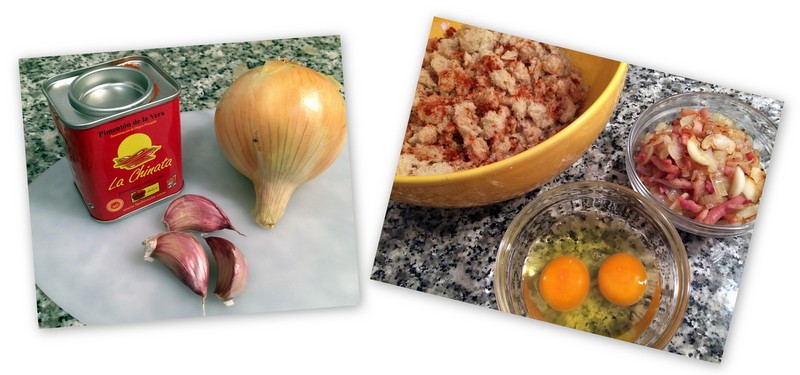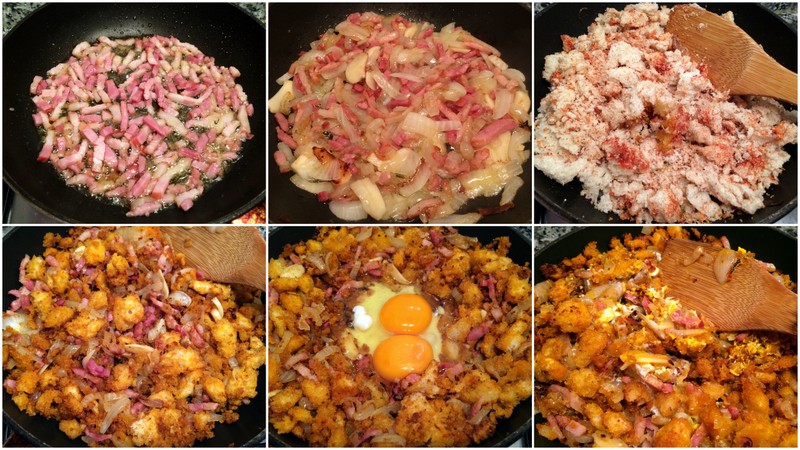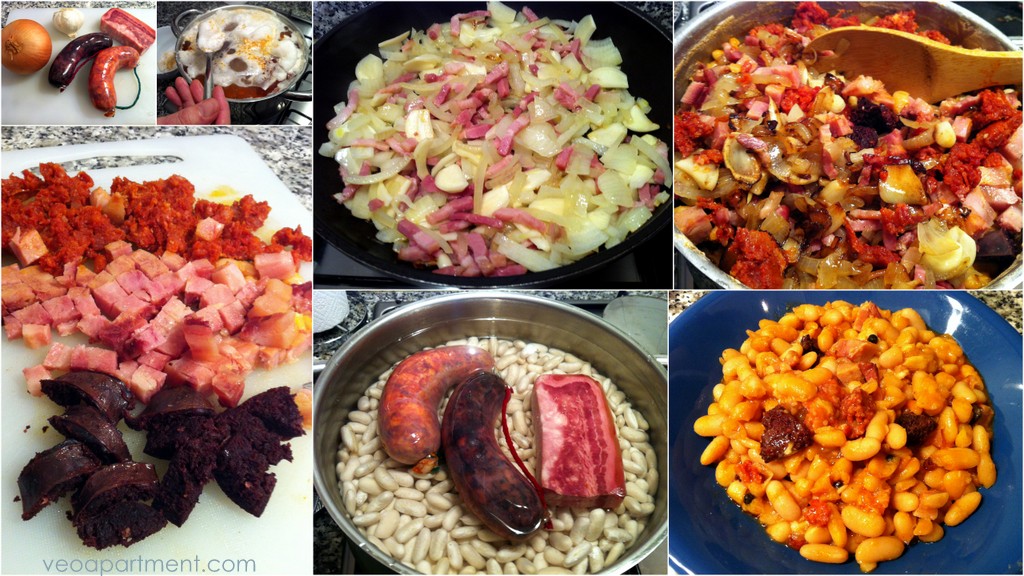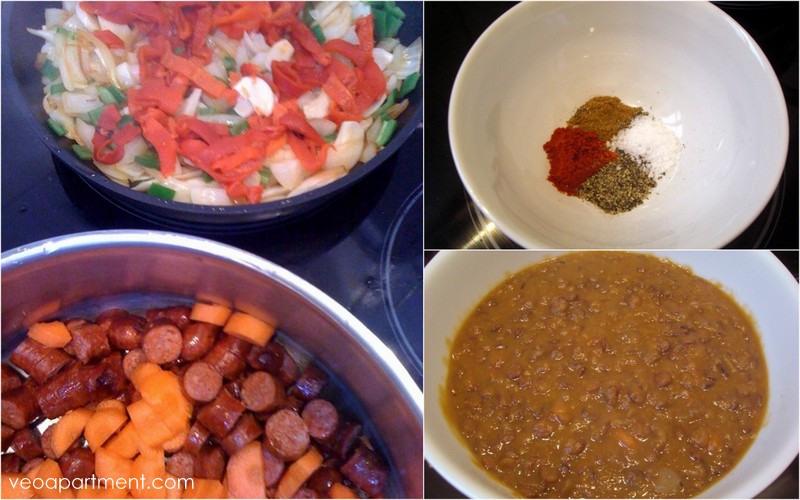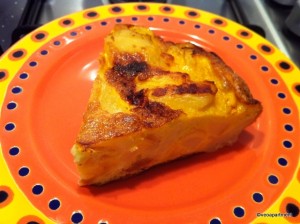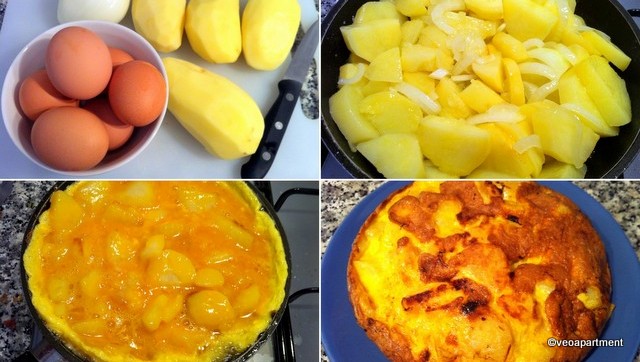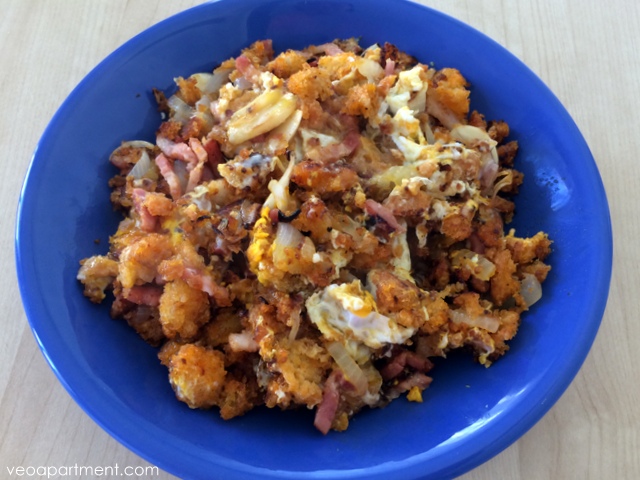
One of the great things about renting an apartment for your holiday is that you can go shopping in the markets and try out Spanish recipes using authentic local ingredients. But what do you do with what you have left over on the last day? One answer could be – migas! Migas is a classic “waste not, want not” poor people’s dish for using up your stale/dry bread, together with bacon or ham, onions, garlic, and a couple of eggs. And although this year the Seville summer seems reluctant to make way for autumn, cooler weather is not far off, and this filling winter warmer is a must for your Spanish cookbook.
- 2 cups stale bread, crumbled up in chunks
- 1/2 cup water (more or less)
- 1 small onion, diced
- 2-4 cloves garlic, thinly sliced
- chopped chorizo or ham or bacon
- 2 eggs
- olive oil
- salt & pepper
- pimentón (smoked paprika)
How much water you’ll need depends on how old and dry your bread is. The idea is to make it moist again, not soggy wet, so sprinkle water over your crumbly bread until it starts to plump up. Once it looks like it’s reviving a bit, put a cloth over it and let it rest while you get on with the other stuff. When the bread is looking good again, add the pimentón (either sweet or spicy) and toss until evenly coated.
In a large saucepan sauté the diced onion and thinly sliced garlic in olive oil until lightly browned and then add the chopped cooked ham. If you are using bacon or sausage that needs to be cooked then add it at the same time as you start cooking the onion and garlic and sauté over low heat. When it’s all cooked through remove the mixture to a bowl.
Add a bit more oil to the same pan and once it’s nice and hot toss in the paprika-covered bread bits. Let it brown a bit, then stir it around, slowly adding a bit more oil if the bread is looking dry. Once you like the look of the bread’s toastiness stir in the onion/garlic/meat, mixing it well. Make an opening in the centre of the pan by pushing the mixture to the sides, making room for the eggs. Add a few drops of olive oil to the pan and add the eggs. Let them cook about half-way through then toss them with the bread mixture. Add salt and pepper to taste and serve.
